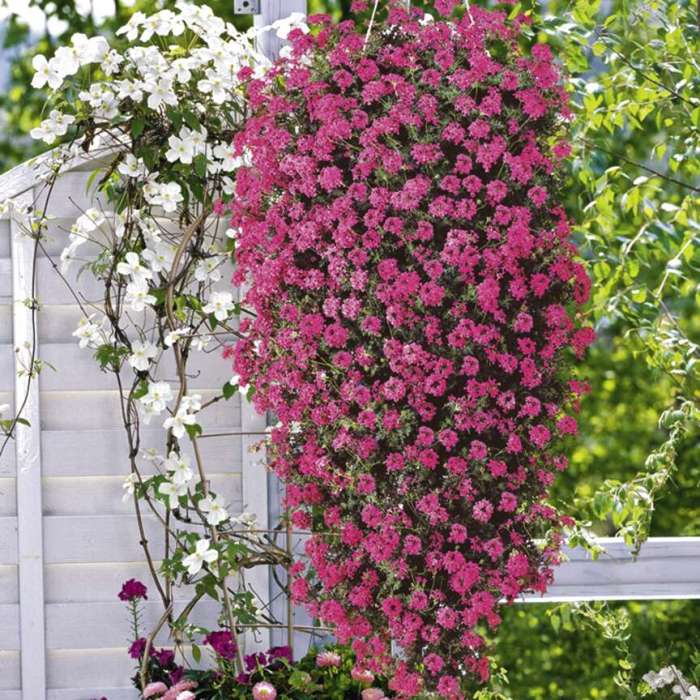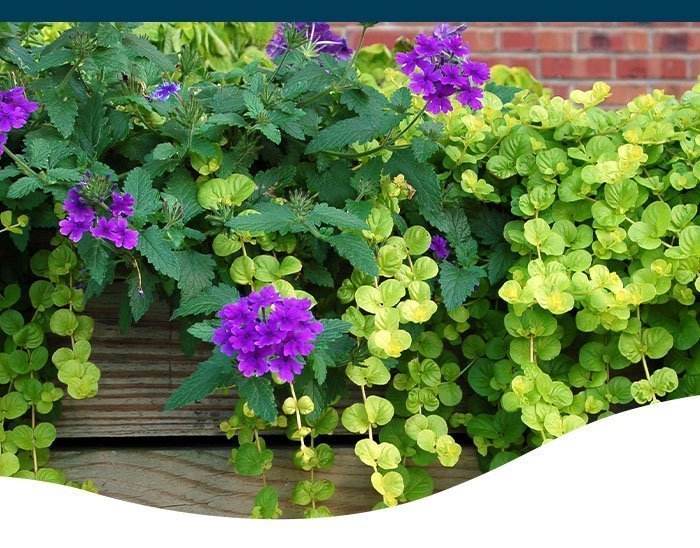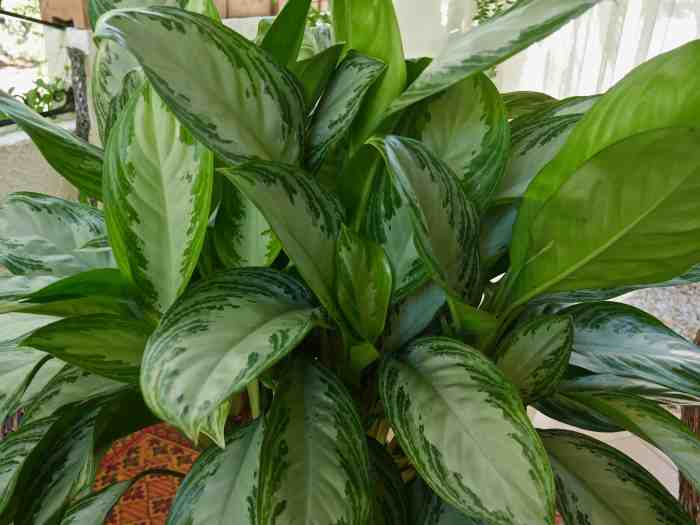Easy care trailing plants are a horticultural haven, offering effortless elegance and a touch of nature to any indoor space. From cascading greenery to vibrant blooms, these plants bring a sense of tranquility and freshness to your home, requiring minimal upkeep.
Whether you’re a seasoned plant enthusiast or a novice seeking low-maintenance greenery, easy care trailing plants are an ideal choice. Their adaptability and resilience make them perfect for various environments, adding a touch of botanical charm to any room.
Popular Easy-Care Trailing Plants for Indoor Decor

Trailing plants bring a touch of greenery and elegance to indoor spaces. They are relatively easy to care for, making them ideal for both novice and experienced plant enthusiasts. Here are some of the most popular easy-care trailing plants for indoor decor:
These plants thrive in bright, indirect light and prefer well-draining soil. Water them when the top inch of soil feels dry to the touch. Misting the leaves occasionally can help increase humidity, which they appreciate.
Pothos
- Also known as the Devil’s Ivy, Pothos is known for its heart-shaped leaves that come in a variety of colors, including green, yellow, and white.
- It is highly tolerant of neglect and can survive in low light conditions, making it an excellent choice for beginners.
Spider Plant
- Spider plants produce long, arching leaves with variegated patterns. They are known for their ability to purify the air and remove toxins.
- These plants prefer bright, indirect light and moderate watering. They also enjoy being fertilized monthly during the growing season.
String of Pearls
- This unique plant features delicate, bead-like leaves that resemble a string of pearls.
- It requires bright, indirect light and infrequent watering. Allow the soil to dry out completely between waterings to prevent root rot.
Vertical Gardening with Trailing Plants: Easy Care Trailing Plants

Vertical gardening has gained popularity as a space-saving and visually appealing way to incorporate greenery into indoor spaces. Trailing plants, with their cascading growth habit, are ideal for creating lush vertical displays.Trailing plants offer several benefits for vertical gardening. Their cascading foliage creates a dramatic effect, adding depth and dimension to walls and other vertical surfaces.
They are also effective at purifying the air and improving indoor air quality. Additionally, trailing plants are relatively easy to care for, making them a great choice for busy individuals or those with limited gardening experience.
Creating Vertical Displays
There are various ways to create vertical displays with trailing plants. Living walls are a popular option, featuring a vertical panel or structure covered in plants. Hanging planters, suspended from the ceiling or walls, are another way to add vertical greenery.
Tiered planters, with multiple levels for plants, are also effective for creating vertical gardens.
Installation and Maintenance
Installing and maintaining trailing plants in vertical gardens is relatively straightforward. When choosing plants, consider their light requirements and growth habits. Some popular trailing plants for vertical gardens include ivy, pothos, philodendron, and ferns.To install trailing plants in a vertical garden, use a potting mix specifically designed for container gardening.
Ensure the plants have adequate drainage to prevent root rot. Water the plants regularly, allowing the soil to dry out slightly between waterings. Fertilize the plants monthly during the growing season.Trailing plants in vertical gardens can add a touch of elegance and greenery to any indoor space.
With proper care and maintenance, these plants can thrive and create a beautiful and sustainable living environment.
Decorative Uses of Trailing Plants

Trailing plants are versatile additions to indoor spaces, offering a touch of greenery and visual interest. Their cascading stems and lush foliage make them ideal for various decorative applications, complementing diverse interior design styles.
In bohemian settings, trailing plants add a whimsical touch with their untamed growth patterns. They can be draped over macrame hangers or woven baskets, creating a relaxed and eclectic ambiance.
Minimalist Interiors
Trailing plants bring a subtle touch of nature to minimalist spaces. Their clean lines and simple forms complement the sleek and uncluttered aesthetic. Suspending them from the ceiling or placing them on high shelves creates a sense of verticality and adds visual interest without overwhelming the space.
Traditional Decor
Trailing plants add a touch of elegance and sophistication to traditional interiors. They can be used as table centerpieces, draping over the edges and cascading gracefully. Alternatively, they can be arranged on shelves or mantels, adding a touch of greenery to classic furnishings.
Easy care trailing plants are a great way to add a touch of greenery to your home without having to put in a lot of effort. If you’re looking for some ideas, check out our article on 5 Drape Plants for a Lush Indoor Oasis . These plants are all easy to care for and will add a beautiful touch to any room.
And if you’re looking for even more low-maintenance options, consider adding some succulents or air plants to your collection. With just a little bit of care, these plants will thrive and add beauty to your home for years to come.
Table Centerpieces
Trailing plants create stunning table centerpieces, adding a touch of nature to dining spaces. They can be placed in hanging planters or cascading from tall vases, creating a focal point that draws the eye.
Shelf Adornments
Trailing plants can transform shelves into vibrant displays. They can be arranged in baskets or pots, cascading over the edges and creating a lush and inviting ambiance. They add a touch of greenery to bookshelves, display cases, and other shelving units.
Window Treatments
Trailing plants can be used as unique and eye-catching window treatments. They can be suspended from the ceiling or placed on high shelves, allowing their stems and leaves to cascade down and frame the window. This creates a natural and inviting ambiance, filtering sunlight and adding a touch of greenery to the space.
Propagation and Care of Trailing Plants

Propagating and caring for trailing plants is relatively easy, making them a popular choice for indoor and outdoor gardening. With proper care, these plants can thrive and add a touch of greenery and elegance to any space.
When it comes to indoor greenery, easy-care trailing plants are a great option for adding a touch of nature to your space. Whether you’re a seasoned plant parent or just starting out, these plants are known for their low maintenance and ability to thrive in low-light conditions.
Check out 5 Draping Indoor Plants for Low Light: Beautify Your Space with Minimal Effort for some inspiration on how to incorporate these trailing beauties into your home décor. From the elegant pothos to the cascading string of hearts, there’s an easy-care trailing plant to suit every taste and space.
Propagation Through Cuttings
Trailing plants can be easily propagated through cuttings. Simply take a healthy stem cutting, remove the lower leaves, and place the cutting in a well-draining potting mix. Keep the soil moist and provide bright, indirect light. Roots should develop within a few weeks.
Propagation Through Division, Easy care trailing plants
Some trailing plants, such as spider plants and ferns, can also be propagated through division. Carefully divide the plant into smaller sections, ensuring each section has healthy roots. Plant the divisions in separate pots with well-draining soil.
Care of Newly Propagated Plants
Newly propagated trailing plants require special care to establish themselves. Use a well-draining potting mix specifically designed for indoor plants. Water the plants regularly, allowing the soil to dry out slightly between waterings. Fertilize the plants monthly with a balanced liquid fertilizer.
Troubleshooting Common Problems
- Yellowing leaves:This can be a sign of overwatering, underwatering, or nutrient deficiency. Adjust watering schedule and fertilize the plant as needed.
- Brown leaf tips:This can be a sign of underwatering or low humidity. Increase watering frequency and mist the plant regularly.
- Leggy growth:This can be a sign of insufficient light. Move the plant to a brighter location.
Designing with Trailing Plants in Small Spaces
Trailing plants offer a practical and aesthetic solution for maximizing space in small apartments or rooms. Their cascading foliage can create a sense of visual interest and depth, making even the tiniest of spaces feel more inviting and spacious.
For those looking to add a touch of greenery to their indoor spaces without the hassle of extensive care, easy care trailing plants are an ideal choice. These low-maintenance plants can be effortlessly suspended from Hanging Plants , creating a cascading effect that adds a touch of elegance and freshness to any room.
The lush foliage of trailing plants, such as pothos, philodendron, and spider plants, not only purifies the air but also adds a sense of tranquility and relaxation to any indoor environment.
Vertical Gardening Techniques
Vertical gardening is an excellent way to incorporate trailing plants into small areas. Trellises, plant ladders, and wall-mounted planters can be used to create vertical gardens that add greenery and a touch of nature to walls and corners. Trailing plants with smaller leaves, such as ivy or creeping fig, are ideal for vertical gardens as they won’t overwhelm the space.
Hanging Planters
Hanging planters are another space-saving solution for trailing plants. They can be suspended from ceilings, beams, or shelves, freeing up valuable floor space. Choose hanging planters in different shapes and sizes to create a dynamic and visually appealing display. Trailing plants with long, flowing stems, such as spider plants or pothos, look particularly stunning in hanging planters.
For those with a green thumb, easy-care trailing plants offer a touch of nature indoors. To elevate their display, consider 5 DIY Indoor Wall Planters to Bring Life to Your Walls . These creative ideas transform walls into living canvases, showcasing trailing plants’ cascading beauty.
Whether you prefer macrame, wood, or repurposed items, these planters provide a unique way to enjoy the lush greenery of easy-care trailing plants.
Creating Privacy and Dividing Spaces
Trailing plants can also be used to create a sense of privacy and divide spaces in small homes. For example, a row of tall trailing plants, such as philodendron or Monstera, can be placed along a window or doorway to block out unwanted views and create a sense of seclusion.
Similarly, trailing plants can be used to define different areas within a room, such as separating the living room from the dining area.
Conclusive Thoughts

Incorporating easy care trailing plants into your home décor is a rewarding experience, bringing a touch of nature and a sense of serenity to your living spaces. With their minimal care requirements and versatility, these plants offer a perfect blend of beauty and convenience, making them an ideal choice for plant lovers of all levels.
Question Bank
What are the most popular easy care trailing plants?
Pothos, spider plants, and philodendrons are some of the most popular easy care trailing plants.
How can I use trailing plants for vertical gardening?
Trailing plants are perfect for vertical gardening as they can be trained to climb trellises, walls, or hanging planters, creating a lush and vibrant display.
How often should I water trailing plants?
Water trailing plants when the top inch of soil feels dry to the touch. Avoid overwatering, as this can lead to root rot.